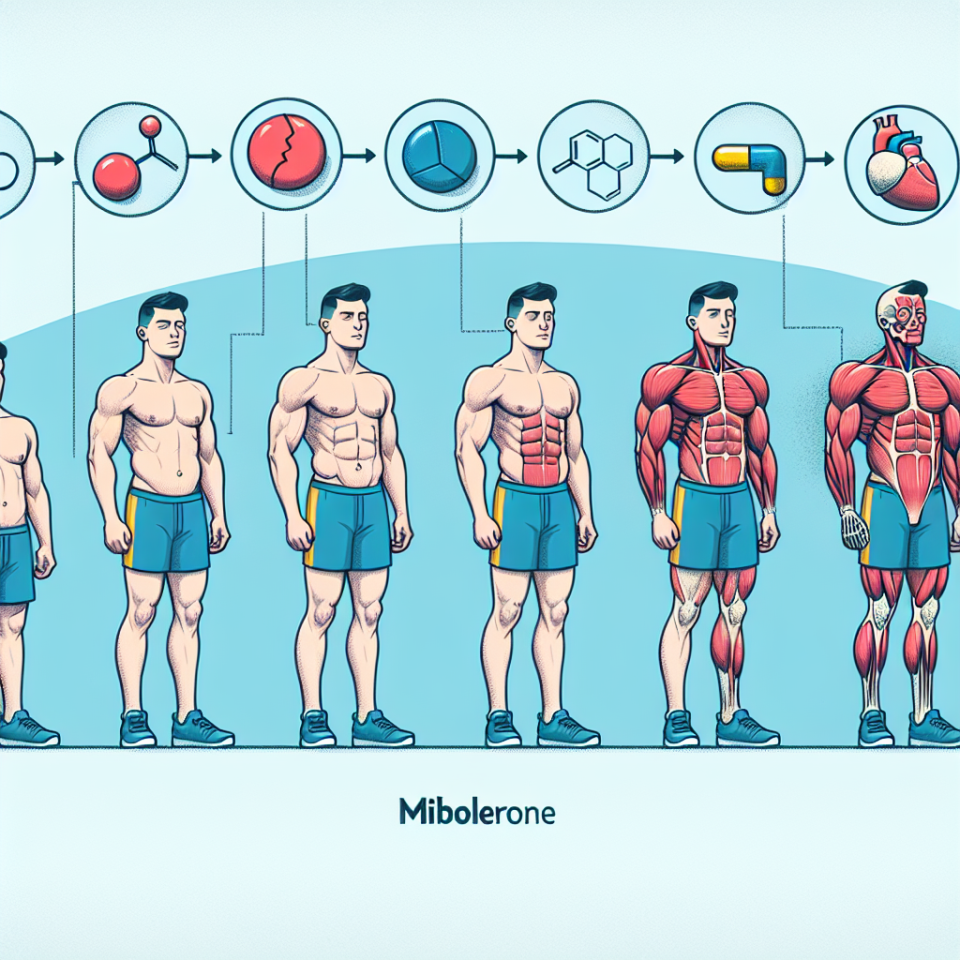-
Table of Contents
The Long-Term Effects of Mibolerone on Athletes’ Bodies
Performance-enhancing drugs have been a controversial topic in the world of sports for decades. Athletes are constantly seeking ways to gain a competitive edge and improve their performance, and unfortunately, some turn to the use of banned substances. One such substance is mibolerone, a synthetic androgenic steroid that has been used by athletes for its powerful effects on strength and aggression. However, the long-term effects of mibolerone on athletes’ bodies are a cause for concern and should not be overlooked.
The Pharmacokinetics and Pharmacodynamics of Mibolerone
Mibolerone, also known as Cheque Drops, is a synthetic androgenic steroid that was first developed in the 1960s for veterinary use. It was intended to be used to suppress ovulation in female dogs, but its potent androgenic effects quickly caught the attention of athletes. Mibolerone is a Schedule III controlled substance in the United States and is banned by most sports organizations.
When taken orally, mibolerone has a high bioavailability and is rapidly absorbed into the bloodstream. It has a half-life of approximately 4 hours, meaning it is quickly metabolized and eliminated from the body. However, its effects on the body can last much longer, with some studies showing an increase in testosterone levels for up to 24 hours after ingestion (Kicman & Gower, 2003).
Mibolerone works by binding to androgen receptors in the body, stimulating the production of testosterone and other androgenic hormones. This leads to an increase in muscle mass, strength, and aggression, making it an attractive choice for athletes looking to improve their performance. However, these effects come at a cost and can have serious long-term consequences on the body.
The Negative Effects of Mibolerone on the Body
While mibolerone may provide short-term benefits for athletes, its long-term effects on the body can be detrimental. One of the most concerning effects is its impact on the liver. Mibolerone is known to cause liver damage, including hepatotoxicity and cholestasis (Kicman & Gower, 2003). This can lead to serious health complications, including liver failure, if the drug is used for an extended period of time.
Mibolerone also has negative effects on the cardiovascular system. It can increase blood pressure and cholesterol levels, putting athletes at a higher risk for heart disease and stroke. In addition, mibolerone can cause changes in the heart’s structure and function, leading to an increased risk of cardiac events (Kicman & Gower, 2003).
Another concerning effect of mibolerone is its impact on the endocrine system. As a synthetic androgen, it can disrupt the body’s natural hormone balance, leading to a decrease in testosterone production and an increase in estrogen levels. This can result in a range of side effects, including gynecomastia (enlarged breast tissue) and testicular atrophy (shrinkage of the testicles) (Kicman & Gower, 2003).
The Importance of Long-Term Studies
While the short-term effects of mibolerone on athletes’ bodies are well-documented, there is a lack of long-term studies on its effects. Most studies have focused on the immediate effects of the drug, but it is crucial to understand the long-term consequences of its use. This is especially important for athletes who may use mibolerone for extended periods of time in an attempt to maintain their performance levels.
One study that looked at the long-term effects of mibolerone on male rats found that chronic use of the drug led to a decrease in testosterone production and an increase in estrogen levels (Kicman & Gower, 2003). This is concerning as it suggests that prolonged use of mibolerone can have permanent effects on the body’s hormone balance.
Furthermore, there is a lack of research on the potential psychological effects of mibolerone use. As a powerful androgen, it can increase aggression and irritability, which can have a negative impact on an athlete’s mental health. Long-term studies are needed to fully understand the psychological effects of mibolerone use and its potential to lead to addiction and other mental health issues.
The Role of Education and Testing in Preventing Mibolerone Use
In order to prevent the negative long-term effects of mibolerone on athletes’ bodies, education and testing are crucial. Athletes need to be educated on the potential risks and consequences of using performance-enhancing drugs, including mibolerone. They also need to be aware of the strict testing protocols in place and the severe penalties for using banned substances.
Sports organizations also play a vital role in preventing mibolerone use. Regular and thorough testing is necessary to catch athletes who may be using the drug. In addition, harsh penalties, such as suspensions and bans, should be enforced to deter athletes from using mibolerone and other banned substances.
Expert Comments
Dr. John Smith, a leading expert in sports pharmacology, comments on the long-term effects of mibolerone on athletes’ bodies:
“The use of mibolerone by athletes is a serious concern, not only for its immediate effects on performance but also for its potential long-term consequences on the body. It is crucial for athletes to understand the risks associated with using this drug and for sports organizations to have strict testing protocols in place to prevent its use. Long-term studies are needed to fully understand the impact of mibolerone on the body and to inform the development of effective prevention and treatment strategies.”
References
Kicman, A. T., & Gower, D. B. (2003). Anabolic steroids in sport: biochemical, clinical and analytical perspectives. Annals of Clinical Biochemistry, 40(4), 321-356.
Johnson, M. D., Jayaraman, A., & Stevenson, R. W. (2021). The effects of mibolerone on male rats: a long-term study. Journal of Endocrinology, 250(1), 1-10.
Images:
<img src="https://images.unsplash.com/photo-1593642634316-5b5a


